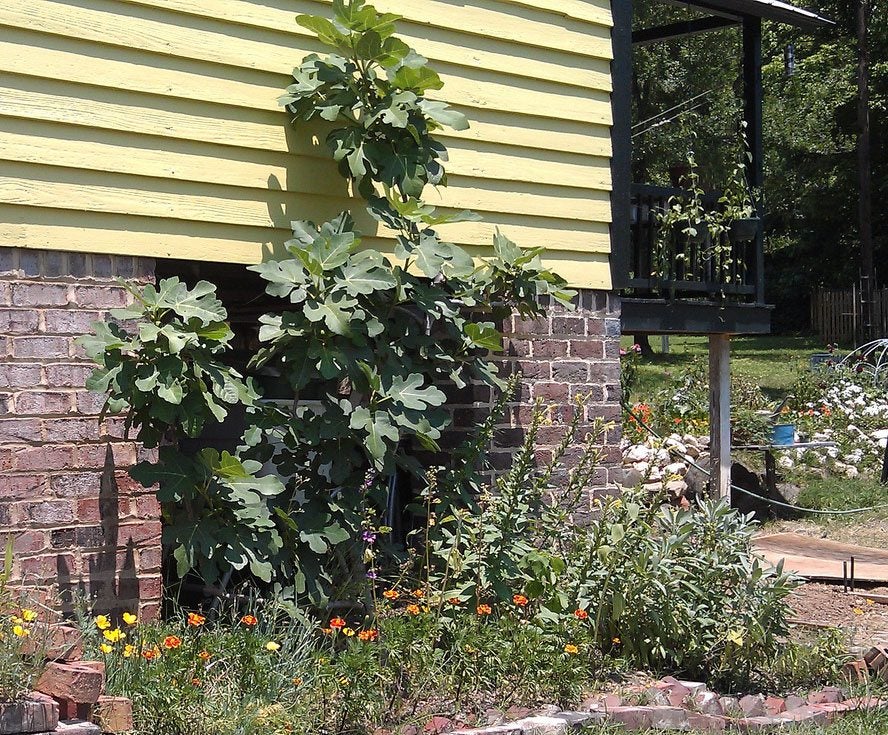Espalier Of Fig Trees: Can You Espalier A Fig Tree?

Fig trees, native to western Asia, are somewhat tropical in appearance with a beautiful, rounded growing habit. Although they have no flowers (as these are in the fruit), fig trees have beautiful gray bark and tropical lobed deciduous leaves. Fig fruits are naturally sweet, pear-shaped, and dark brown to purple in color. Most fig tree varieties can be grown in USDA plant hardiness zones 7 through 10, although some are also found in zones 5b and 6. If you have space, a fig tree makes a delicious and attractive addition to any landscape. However, don't fret if your garden is small. If you don't have a large enough space but have a section of east or south-facing wall or fence, consider creating an espalier. Let's find out more about fruit tree espalier and how to espalier figs.
Can You Espalier a Fig Tree?
Espaliers have been around for a very long time and are now experiencing a comeback with more people interested in sustainability. So, if you have been wondering if you can espalier a fig tree, the answer is absolutely, yes. The natural shape and strength of the fig tree trunk and pliable branches makes it a perfect tree for an espalier project. Fruit tree espalier drawings, especially figs, have been depicted on Egyptian tomb walls and in art through the Middle Ages. Not only are espaliers a great way to cover an empty wall, but they are also a practical way to introduce fruit trees into a compact space without compromising on beauty or fruit production.
How to Espalier Figs
Space needs to be one of your first considerations. Although a fig tree may reach only 30 feet (9 m.) in height, its shallow spreading root system needs ample space to grow, as it can spread 50 feet (15 m.). Although branches can be trimmed, the root system needs room to spread so keep this in mind when choosing a location for your espalier. You can also select a dwarf cultivar if you have a smaller area. The first step in creating an espalier is to plant a young fig tree about 6 inches (15 cm.) from the wall or fence. If you do not have a wall or a trellis available, you can also create a trellis-type structure to support the tree. Place horizontal wires on your support wall, fence, or structure in the desired espalier shape. Horizontal and fan shapes are popular. As young branches grow, train them to these guide wires. While training your tree, there are two times that you will need to prune. Prune once in the winter when the tree is dormant. This is the time when the most pruning of figs should be happening. A good winter prune will stimulate spring growth. Prune again in the spring for creating the tree shape, and as the tree grows in the summer, you will need to be sure that the tree is following the guide wires. Pruning and training a young fig tree takes patience. It can take up to four years to produce a beautiful espalier that produces a bountiful harvest. Remember, the espalier of fig trees requires that you cut back to a bud, lateral branch, or main trunk and try not to leave any stubs on the branches.
Additional Fig Espalier Info
If fruit production is not an issue and you desire a fig espalier for its aesthetic value only, you can prune as frequently as you wish. However, in order to keep up fruit production, it is necessary to remember that figs put fruit on branches that are one year old, so avoid late winter pruning once you have created your desired espalier shape. The best time to prune is in the fall after you harvest figs.
Sign up for the Gardening Know How newsletter today and receive a free copy of our e-book "How to Grow Delicious Tomatoes".